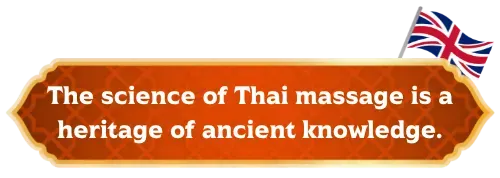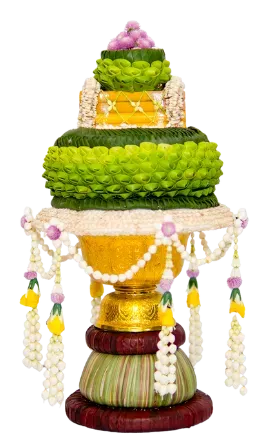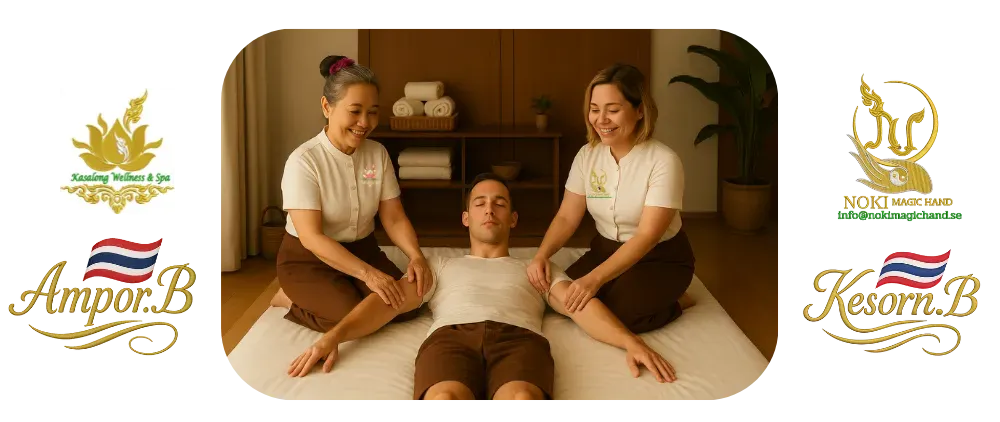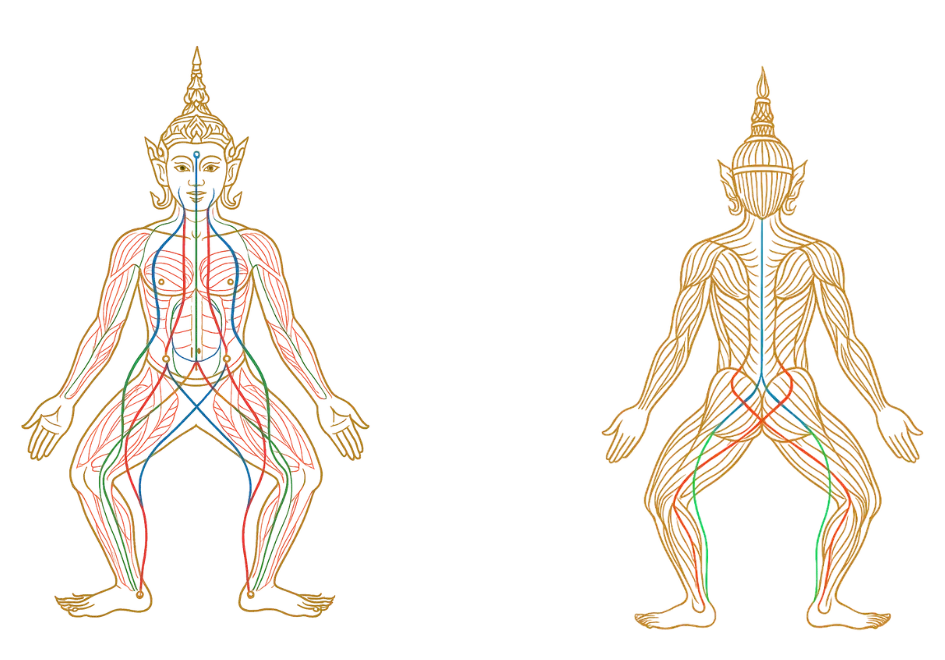

Devotional chant
“Doctor Jivaka Komarabhacca”
Namo Tassa Bhagavato Arahato Sammā-Sambuddhassa
(Chant Namo 3 times)
"Om Namo Chiwako Sirasā Ahaṁ
Karuniko Sappa Sattānaṁ
Osatha Tibbha Mantaṁ Pabhāso
Suriyo Chandaṁ Komāra Bhaccho Pakāsesī Bandhitto Sīmethaso
Arokhayā Samanā Homī"
O Karāokē Transliteration for Foreigners:


Four-hand massage is a synchronized practice that nurtures the body, mind, and energy system.
What the recipient of the massage will experience:
Blood circulation and energy levels are enhanced, while deep tension in the muscles and joints is relieved.
The digestive, nervous, and respiratory systems function more efficiently.
A profound relaxation of both body and mind occurs, and the internal energy balance (yin–yang) is harmonized.
Methods employed in massage:
Traditional Thai Massage
A therapeutic technique that systematically utilizes pressure points and the body's primary energy pathways.
It focuses on kneading, acupressure, and relieving muscle tension to restore physical balance and flexibility.
Ruesi Dat Ton – Thai Yoga Stretching Techniques
This ancient self-healing practice uses specific postures to flex, extend, and mobilize the joints, based on the movements of the Ruesi (sages).
It stimulates breathing and vitality, supports spinal alignment, and promotes inner balance.
Four-Hand Synchronized Massage
Two skilled therapists work in perfect harmony, using mirrored movements to create a deeply balanced and calming experience.
This technique provides a more immersive and soothing sensation than conventional massages.

10 Principal Sen Lines
1.Pingkhala
Regulates vital energy, body temperature, muscular function and key nerve activity.
2. Ittha
Governs the left-side energy, cool sensations, muscles, and nerves on the left side of the body.
3.Suman
Runs along the midline of the body and is connected to breathing, mucus regulation, and the respiratory system.
4.Kalathari
Controls digestion, abdominal gas, and the proper functioning of the intestines.
5.Tawari
Supports nutrient absorption, stomach health, and waste elimination.
6.Sahatsarangsi
Influences vision, the sensation of wind in the head, cognition, and symptoms like dizziness or blurry vision.
7.Ruchuum
Affects hearing, sound interpretation, body balance, and conditions such as ringing in the ears.
8.Jantapusang
Works with Ruchuum to regulate the ears and the sides of the head.
9.Sikhini
Relates to the urinary system and the purification and excretion of bodily waste.
10.Sukumang (or Sukhumang)
Governs the spinal column, lower back, and the lower digestive tract.

The science of Thai massage,
a heritage of ancient knowledge.
Thai massage boasts a history that spans over 2,500 years.
It has its roots in Indian medicine (Ayurveda) and yoga. The founder of Thai massage is believed to be Dr. Jivaka Komarabhacca, who served as the physician to the Buddha. Over time, Thai massage merged with indigenous Thai knowledge, evolving into a unique discipline that emphasizes acupressure, stretching, and the harmonization of the body’s energy.

“Massage with sophistication and distinct design.”
Employ soft and subtle movements. Avoid straddling or applying excessive force.
Frequently employed to care for nobles and significant individuals within the royal court.
Focus on sensitivity and consideration.

An intensive massage focuses on direct therapeutic techniques for the body.
It emphasizes acupressure, body stretching, and the full strength of both hands.
These techniques are commonly used by villagers to relieve aches and pains, improve blood circulation, and quickly ease discomfort.
They have proven to be truly effective in everyday life.

Rejuvenate with the stretching postures of ancient sages.
The traditional Ruesi Datton postures are designed to stimulate the body's ten main energy lines, enhancing flexibility, relieving muscle tension, and restoring internal balance.
